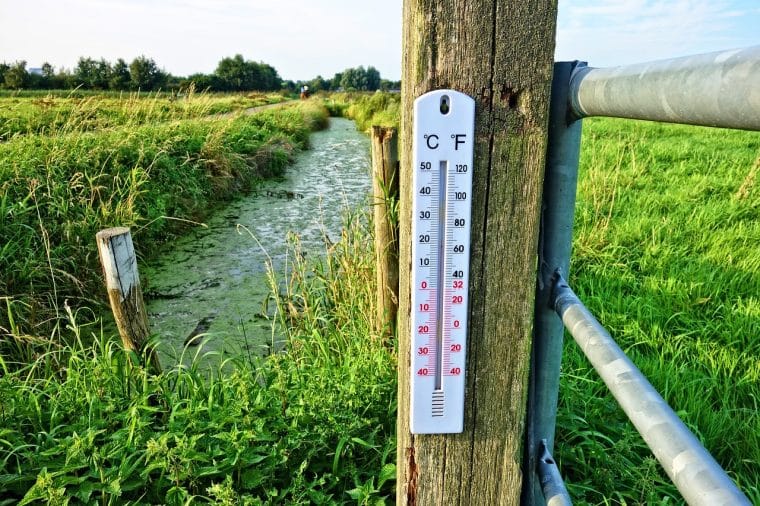
The Pacific Northwest and western Canada are bracing for a record-setting heat wave that could see temperatures soar 20 to 25 degrees Fahrenheit above average starting this weekend.
Although the heat wave is not expected to reach the same heights as the punishing heat dome that hit the region in June 2021, it still raises public health concerns, major science magazine Scientific American has warned.
The Pacific Northwest is known for its cool, gentle summers, and people living in the area are not accustomed to serious heat this early in the season or any time of year.
Along with the public health risks, hot, dry conditions could also fuel wildfires already raging in western Canada’s province of Alberta, causing air quality problems and releasing smoke all the way to the US East Coast.
Climate Change is Making Summers Hotter and Longer
The upcoming heat wave only adds to the growing evidence that summers are getting progressively hotter and longer due to humans releasing planet-warming emissions into the atmosphere.
The heat wave is being propelled by a high-pressure system, or ridge, that is moving through the atmosphere over the region and pulling in warm air from the south.
The high pressure also results in cloudless skies, which allows the sun’s direct heat to hit the surface and further warm the region.
“Each day it’s there, it strengthens,” Kayla Mazurkiewicz, a meteorologist at the National Weather Service’s (NWS’s) Seattle office, said, noting that it will drive temperatures to rise over the weekend to an expected peak on Sunday or Monday.
While this heat wave will have comparatively lower absolute temperatures, temperatures could still reach the low to mid-90s F in some areas, with daily records potentially broken in some spots.
Unusually warm nighttime lows are also a concern, particularly since air conditioning is not as prevalent in the region as in other areas. Nighttime breezes are usually relied on as a key means of cooling down homes and bodies.
A similar ridge caused the infamous 2021 heat dome, although this year’s event is happening earlier in the year and is centered farther north.
The 2021 heat dome shattered all-time highs in several places, reaching 116 degrees F in Portland, 107 degrees F in Seattle, and 121 degrees F in Lytton, British Columbia, a village that was largely destroyed by a heat-fueled wildfire.
Officials in Portland and Seattle have already warned residents to be cautious during any outdoor physical exertion.
This heat is particularly dangerous for young children, the elderly, those with health problems like asthma and cardiovascular disease, and low-income communities.
They have also warned people to be careful if they go for a cooling dip in local rivers, as the snowmelt season is still going on, making water temperatures very cold.
Heat Wave to Prompt Meltdown of Snowpack in the Region
The heat wave could also lead to the rapid melting of snowpack in the Cascade Range and the Pacific Northwest.
Normally, the Pacific Northwest relies on the slow melt of the snow for a steady source of water, but heat waves like this one can cause the snow to melt too quickly, leaving the streams in tough shape.
In Alberta, officials are keeping an eye on the wildfires raging in the northern parts of the province. They are concerned that the hot, dry weather could exacerbate the fires, leading to poor air quality and smoke from the fires making its way to the US East Coast.
Although there is no specific study on the role of climate change in the current heat wave, it is evident that summers across the globe are getting hotter.
A 2021 study found that meteorologic summer increased from 78 to 95 days between 1952 to 2011 across the entire Northern Hemisphere. As summer expands its reach, winter is simultaneously shrinking.
The Pacific Northwest has witnessed hotter summers over the years, with the average summer temperature in Seattle and Portland being three degrees F higher than it was in 1970.
The region is experiencing more days above 90 degrees, and those days are steadily occurring earlier in the season, said. Larry O’Neill, a climate scientist at Oregon State University and director of Oregon Climate Services.
“What would once be considered a nice warm spring day can now rise above that 90-degree mark,” he added.
Read More:
What's the Best Crypto to Buy Now?
- B2C Listed the Top Rated Cryptocurrencies for 2023
- Get Early Access to Presales & Private Sales
- KYC Verified & Audited, Public Teams
- Most Voted for Tokens on CoinSniper
- Upcoming Listings on Exchanges, NFT Drops